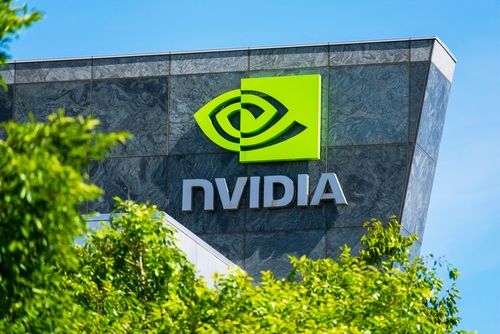- Tesla Stock Hits Record High as Robotaxi Tests Ignite Market. Why Is Goldman Sachs Pouring Cold Water on Tesla?
- Gold Price Hits New High: Has Bitcoin Fully Declined?
- Gold jumps above $4,440 as geopolitical flare, Fed cut bets mount
- U.S. November CPI: How Will Inflation Fluctuations Transmit to US Stocks? Tariffs Are the Key!
- US Q3 GDP Released, Will US Stocks See a "Santa Claus Rally"?【The week ahead】
- December Santa Claus Rally: New highs in sight for US and European stocks?

One of the hottest stocks of 2024 is Nvidia (NASDAQ: NVDA), trading up more than 185% this year, as of this writing. That stock price performance has helped catapult it to become one of the largest companies in the world (as measured by market cap).
But investing tends to focus more on the future so, while the semiconductor company and its shareholders are enjoying this great success, the question on many investors' minds right now is whether the stock is a buy, sell, or hold moving forward. Let's take a look at each case to help decide.
The sell case for Nvidia
The sell case for Nvidia largely revolves around future demand for its graphic processing units (GPUs). While the company reports robust demand for its artificial intelligence (AI) chips, the big question is how long will this outsized demand last.
There is a race going on among the big cloud computing companies, AI start-ups, and other tech companies to build out the best AI models, which need a lot of computing power and GPUs to facilitate their training. If sometime soon these large language models (LLMs) become good enough, spending for AI training, which has been the biggest driver of Nvidia's GPU sales, could begin to decrease.
At the same time, Advanced Micro Devices has been able to carve itself a niche in the inference part of the AI infrastructure market, while several companies have also been turning to customized AI chips with the help of companies like Broadcom. While Nvidia has the dominant position in AI training, it could face more challenges if there is a shift in demand toward inference.
If these scenarios play out, then Nvidia would likely see declining sales and earnings and the stock would be a sell.

Image source: Getty Images.
The buy case for Nvidia
While the sell case for Nvidia is based on future demand, the buy case is largely predicated on this as well. Demand is insatiable for Nvidia's chips, and there is no sign of it easing. As AI models advance and become more sophisticated, they don't just need more computing power and GPUs to train on, they need exponentially more.
For example, xAI's Grok 3 LLM needed five times as many GPUs to train on as its predecessor Grok 2, while Alphabet said its Llama 4 LLM would need up to 10 times the computing power as Llama 3. Oracle, meanwhile, earlier said it sees no let up in AI infrastructure spending over the next five to 10 years, while Nvidia's customers have by and large indicated that their capital expenditure budgets related to AI spending were all going up in 2025.
Meanwhile, last quarter the company also talked about its opportunities in AI inference, noting it is the largest company in this area and that it has a large built-in customer base. It has also been starting to see traction among enterprise and industrial customers, which it thinks will be the next big AI wave.
At the same time, Nvidia still has a wide moat in the GPU space thanks to the widespread use of its CUDA software platform. Nvidia long ago created the free software platform to allow developers to program its GPUs, and since then it has become the standard on which developers have learned. The company has also accelerated its development cycle to introduce upgrades once a year (rather than the prior 2-year to 3-year pace) to help stay at the forefront of GPU technology, which should continue to give it pricing power.
In addition to the opportunities still in front of it, Nvidia's stock trades at an attractive valuation despite its strong gains this year. It trades at a forward price-to-earnings (P/E) ratio of about 31 based on 2025 analyst estimates, and a price/earnings-to-growth (PEG) ratio of approximately 1. A PEG ratio under 1 is generally viewed as undervalued, and growth stocks will often command PEG ratios well above 1.
NVDA PE Ratio (Forward 1y) data by YCharts
The hold case for Nvidia
Given Nvidia's huge gains over the past few years, it is certainly a reasonable strategy for investors who bought the stock in the past couple of years to book some profits and then let their remaining position ride. At the end of the day, this is just prudent portfolio management.
Meanwhile, investors will have time to see how both the buy and sell cases for Nvidia play out in the coming years.
The verdict
For investors who jumped in on Nvidia early, I would trim a bit and continue to hold the rest. However, I don't think it's too late for new investors to get in on the action.
Nvidia's customers' actions and commentary continue to point to robust AI infrastructure spending over the next few years, at least, while it remains poised to be the biggest beneficiary of this spending. At the same time, the stock is still attractively priced despite the run-up in its shares.
Read more
* The content presented above, whether from a third party or not, is considered as general advice only. This article should not be construed as containing investment advice, investment recommendations, an offer of or solicitation for any transactions in financial instruments.


